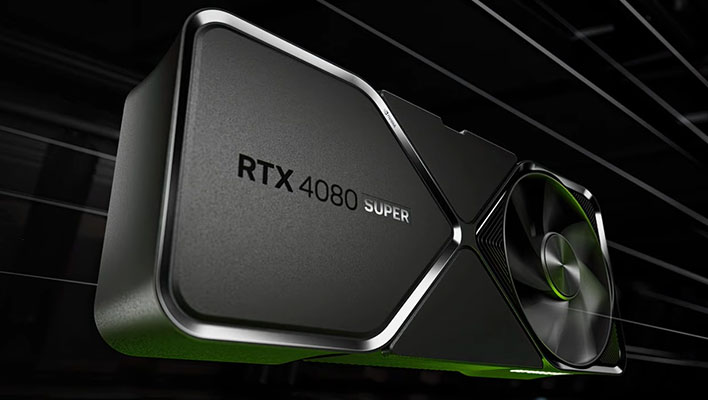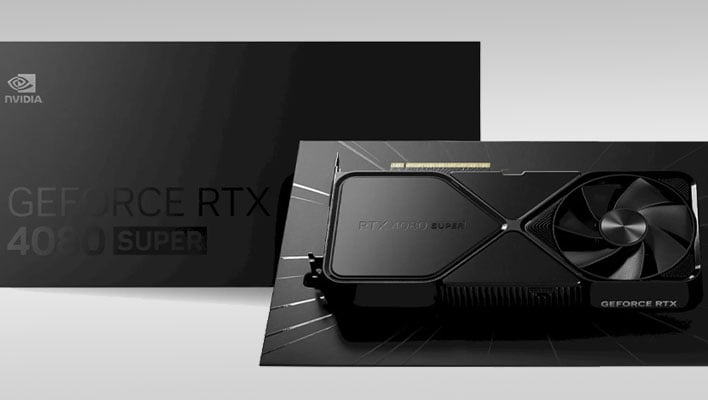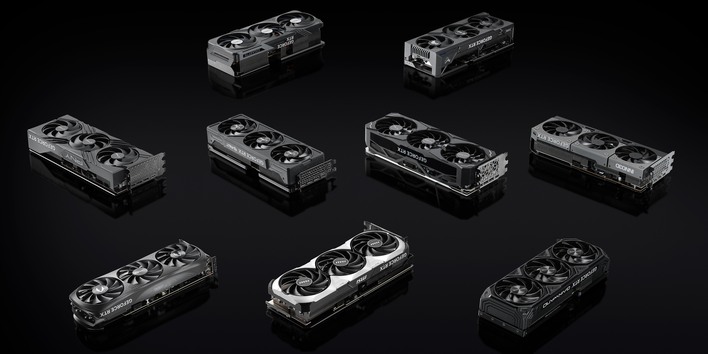NVIDIA GeForce RTX 40 Super GPUs Are Official With Faster Specs And Lower Prices

Did you love the GeForce RTX 4080 and GeForce RTX 4070 Ti? Well, too bad, because they're going away forever. Don't fret, though. In their place, NVIDIA's just announced two faster GPUs along with a card to slot in between the GeForce RTX 4070 and the new GeForce RTX 4070 Ti Super. That's right: the GeForce RTX 4070 Ti Super is real.

Well, we knew that already. It's nice to have it confirmed straight from NVIDIA, though. Indeed, the green team is launching the GeForce RTX 4070 Super, GeForce RTX 4070 Ti Super, and GeForce RTX 4080 Super today, and two of 'em come with a price cut. NVIDIA's been a little cagey about the specifications, but don't worry, we did the math for you and came up with the details:

Just looking over the chart, no doubt a few things will stick out to you. The GeForce RTX 4080 Super's significantly-upgraded specifications over the original recipe are impressive, yet the card shaves $200 off the MSRP of the original RTX 4080. That's arguably the most important thing about this launch; while $999 is still a pricey for graphics card, it's also an extremely powerful one.
The GeForce RTX 4080 Super replaces its non-Super form entirely, while the RTX 4070 Ti Super replaces the RTX 4070 Ti at the same price. The change in GPU core specifications is notable, with 10% more shaders, but the real change here is the move from 12GB of RAM on a 192-bit bus to a full 16GB on a 256-bit bus. That brings the memory bandwidth up by 33%, which ought to make a pretty big difference when playing at 4K.

That's because all of NVIDIA's performance comparisons in its presentation are against the previous-generation Ampere hardware, not against the previous Ada Lovelace GPUs. We get it—the Super cards wouldn't blow the pants off the original recipe Ada parts, and it looks a lot more impressive this way. It doesn't really give us much of a frame of reference, though; we already knew Ada was faster than Ampere. Still, we at least get a few official points of reference.

We don't know how NVIDIA did it, but somehow or another, the company seems to have figured out a way to combine G-SYNC's variable refresh rate with ULMB blur reduction strobing. This isn't the first time anyone has ever combined VRR with strobing, but it is a first for G-Sync. The result is undoubtedly glassy smooth motion like a CRT while retaining the synchronization benefits of the original variable refresh rate technology. This feature is apparently coming first to the ASUS ROG Swift PG27 series.
Meanwhile, the new GPUs are all arriving this month. First up will be the GeForce RTX 4070 Super ($599), which is scheduled to arrive on store shelves January 17th. The next week, the GeForce RTX 4070 Ti Super ($799) will appear on the 24th. Finally, the GeForce RTX 4080 Super ($999) is expected to hit on January 31st. It will be interesting to see what prices of original recipe GeForce RTX 4080 cards look like in February.



